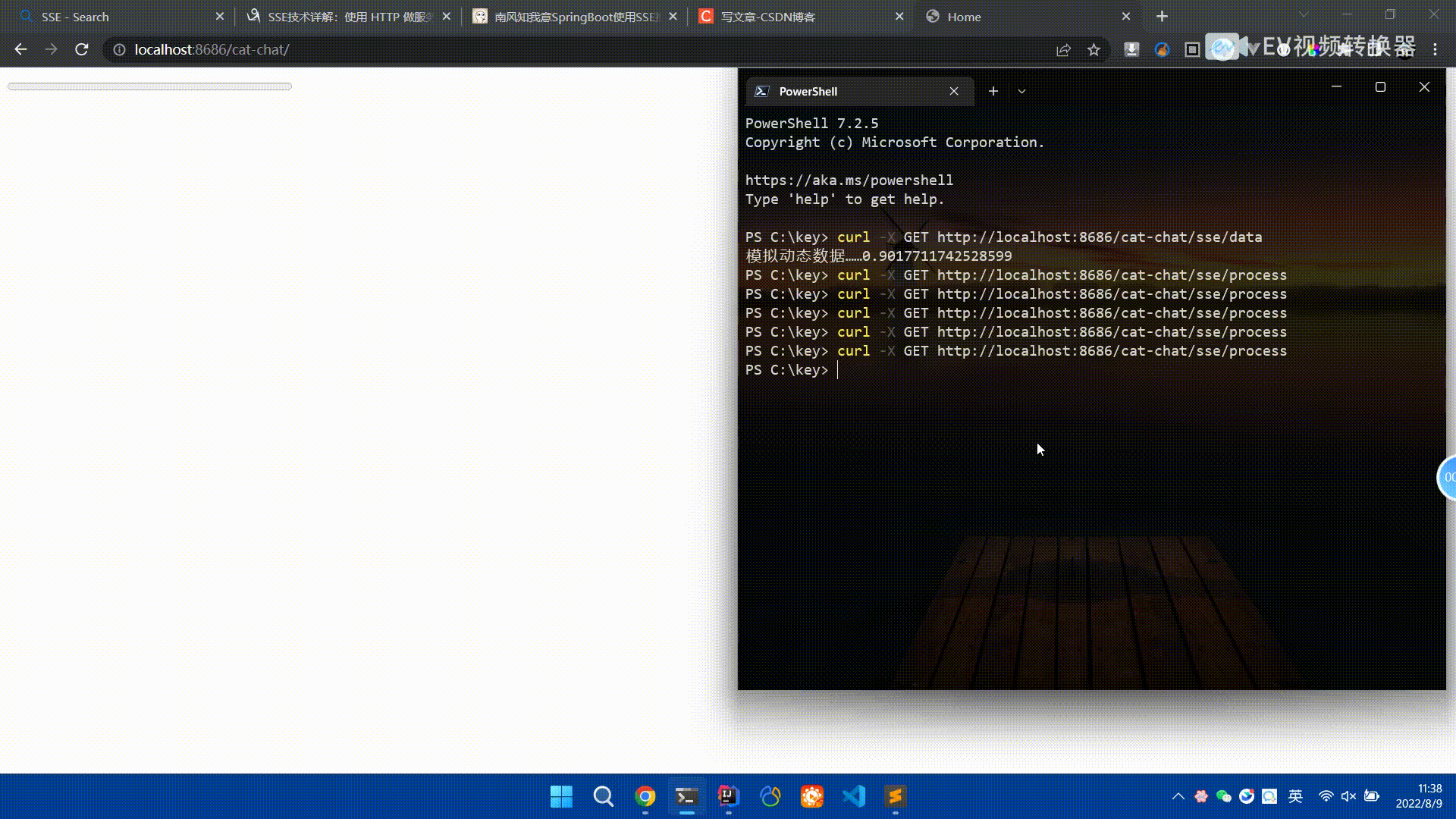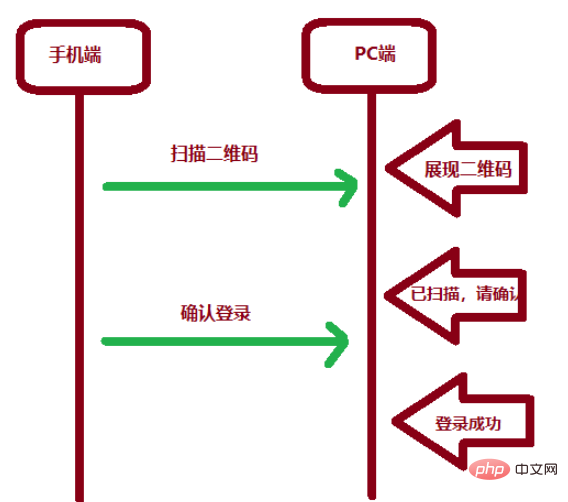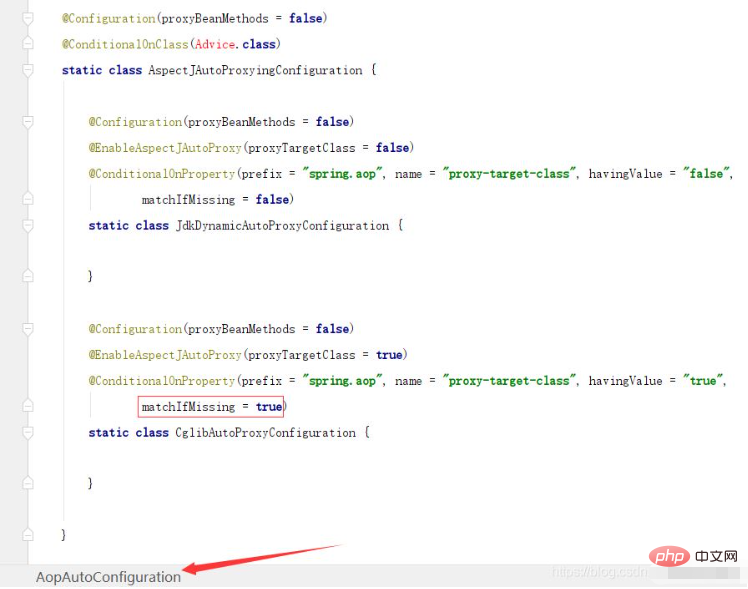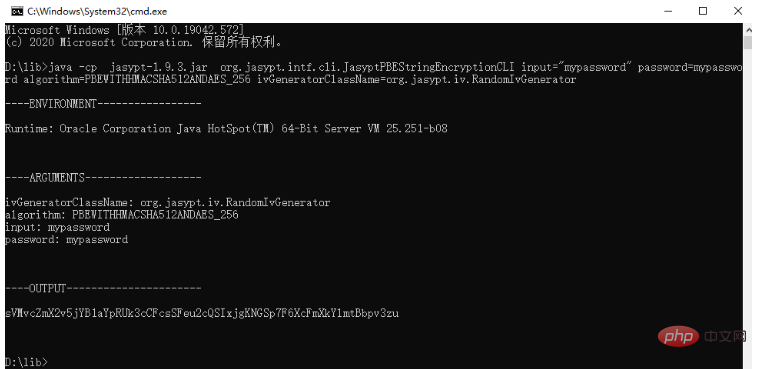 Java
Java javaTutorial
javaTutorial How to solve the problem that the Springboot2 session timeout setting is invalid
How to solve the problem that the Springboot2 session timeout setting is invalidProblem:
Today, I encountered a setting timeout problem in the project. The application.properties changes of SpringBoot2 never took effect.
Solution:
The embedded container used by Spring Boot is controlled by the server.* properties. Spring Boot will create an instance of the servlet container using one of the ServletWebServerFactory instances. These classes use server.* attributes to configure managed servlet containers (such as Tomcat, Jetty, etc.).
When the application is packaged into a war file and deployed to a Tomcat instance, the server.* attributes cannot be used. These do not apply as the prefabricated servlet container can be leveraged (since the service is running remotely). Therefore, deploying to a remote Tomcat will render the server.* properties useless.
1. Change the configuration file according to the posts on the Internet (if it is started by Jar, it will take effect), as follows:
server: servlet: session: timeout: PT1H # 1小时过期 cookie: max-age: PT1H # 1小时过期
Note: PT1H means that the time to set the session expiration is 1 hour.
Extension: Duration
The setTimeouot method is found by viewing the springboot source code. Here, the instance of Duration is required to be passed in.
public void setTimeout(Duration timeout) {
this.timeout = timeout;
}
Duration is new in Java8 and is mainly used for calculation Date difference, Duration is declared final and is thread-safe.
If you convert a string, it is similar to the date formatting method of SimpleDateFormat
Duration. Strings are similar to numbers, which are positive and negative: the default is positive, and negative starts with '-', followed by Then 'PT', the following time letters:
'D' - day
'H' - hour
'M' - Minutes
'S' - Seconds
Each unit must start with a number, and hours and minutes The order of seconds cannot be messed up, for example: PT2H3M2S is equal to -PT-2H-3M-2S.
2. Set the session timeout of tomcat
1) In the conf directory of tomcat, change servler.xml:
<context></context>
2) Change web.xml in the project:
<session-config> <session-timeout>20</session-timeout> </session-config>
3) Change in the program
session.setMaxInactiveInterval(30*60);
When you encounter the same problem, please read the red words above and troubleshoot in order.
Test code:
@RestController
@RequestMapping("/valid-time")
public class TestController {
@GetMapping("/test")
public String validTime(HttpServletRequest request, HttpServletResponse response) {
HttpSession session = request.getSession();
int sessionTime = session.getMaxInactiveInterval();
return new StringBuilder("sessionTime=").append(sessionTime).toString();
}
}
The huge pit that causes Spring session failure due to time out-of-synchronization
The huge pit that causes Spring session failure due to out-of-synchronization of Linux server time
Due to business needs, the original stand-alone environment was converted into a cluster environment. In order not to modify the tasks, spring session redis was chosen as the session sharing solution.
After confirming the technical solution, I searched a lot of information about spring session on the Internet. After reading it and not finding any pitfalls of previous people, I started to work on it.
The redis installation process is ignored.
Add spring session to the project step by step according to the information. The single-node project ran successfully without any errors, and the session was successfully written to redis.
Then for the sake of safety, I installed nginx on my computer and deployed 3 tomcats. Everything looked perfect, and session sharing was completed between multiple nodes.
So far, all the preliminary preparations have been completed, and the last step is just left.
The nightmare begins...
Deploy all nodes online, and then open the browser to successfully access the application. Of course, we can't just stop at the point where we see the page is completed, we have to do it no matter what. Log in and log in, so...
Then...
I entered the user password countless times, prompting that the login was successful, but the final result was still being rejected, o(╥﹏╥)o
The next step is to fill in countless pitfalls
Look at the logs...
Look at various request requests...
I suspect there is a BUG in the spring session... …
Even turned on the remote DEBUG mode debugging, and finally saw in the universal DEBUG mode that when the spring session getsSession, if the session is obtained, will first determine whether the session has expired, compare The method is also very simple, which is to obtain the current system time and compare it with the expiration time of the session. If the current time is less than the expiration time, it indicates that the session has not expired. Seeing this, I instantly felt a sense of enlightenment, and the small universe finally broke out here.
Nima—>All the acquired sessions were expired, and then...then...of course I hurriedly ran to check the server time, so...I cried o(╥﹏╥)o, it turned out to be Nima It was you who tricked me...
In order to commemorate this journey of lying in the trap, I am posting this article
In addition, by the way, I will record the Linux server time synchronization
date command:
date : View the current time, the results are as follows: Tue Mar 4 01:36:45 CST 2017
date -s 09:38:40 :Set the current time, the result is as follows: Tue Mar 4 09:38:40 CST 2017
ntpdate command:
ntpdate -u ntp.api.bz :Network time Synchronization command
ntp commonly used server:
China National Time Service Center: 210.72.145.44
NTP server (Shanghai): ntp.api.bz
The above is the detailed content of How to solve the problem that the Springboot2 session timeout setting is invalid. For more information, please follow other related articles on the PHP Chinese website!
 怎么使用SpringBoot+Canal实现数据库实时监控May 10, 2023 pm 06:25 PM
怎么使用SpringBoot+Canal实现数据库实时监控May 10, 2023 pm 06:25 PMCanal工作原理Canal模拟MySQLslave的交互协议,伪装自己为MySQLslave,向MySQLmaster发送dump协议MySQLmaster收到dump请求,开始推送binarylog给slave(也就是Canal)Canal解析binarylog对象(原始为byte流)MySQL打开binlog模式在MySQL配置文件my.cnf设置如下信息:[mysqld]#打开binloglog-bin=mysql-bin#选择ROW(行)模式binlog-format=ROW#配置My
 Spring Boot怎么使用SSE方式向前端推送数据May 10, 2023 pm 05:31 PM
Spring Boot怎么使用SSE方式向前端推送数据May 10, 2023 pm 05:31 PM前言SSE简单的来说就是服务器主动向前端推送数据的一种技术,它是单向的,也就是说前端是不能向服务器发送数据的。SSE适用于消息推送,监控等只需要服务器推送数据的场景中,下面是使用SpringBoot来实现一个简单的模拟向前端推动进度数据,前端页面接受后展示进度条。服务端在SpringBoot中使用时需要注意,最好使用SpringWeb提供的SseEmitter这个类来进行操作,我在刚开始时使用网上说的将Content-Type设置为text-stream这种方式发现每次前端每次都会重新创建接。最
 SpringBoot怎么实现二维码扫码登录May 10, 2023 pm 08:25 PM
SpringBoot怎么实现二维码扫码登录May 10, 2023 pm 08:25 PM一、手机扫二维码登录的原理二维码扫码登录是一种基于OAuth3.0协议的授权登录方式。在这种方式下,应用程序不需要获取用户的用户名和密码,只需要获取用户的授权即可。二维码扫码登录主要有以下几个步骤:应用程序生成一个二维码,并将该二维码展示给用户。用户使用扫码工具扫描该二维码,并在授权页面中授权。用户授权后,应用程序会获取一个授权码。应用程序使用该授权码向授权服务器请求访问令牌。授权服务器返回一个访问令牌给应用程序。应用程序使用该访问令牌访问资源服务器。通过以上步骤,二维码扫码登录可以实现用户的快
 SpringBoot/Spring AOP默认动态代理方式是什么May 10, 2023 pm 03:52 PM
SpringBoot/Spring AOP默认动态代理方式是什么May 10, 2023 pm 03:52 PM1.springboot2.x及以上版本在SpringBoot2.xAOP中会默认使用Cglib来实现,但是Spring5中默认还是使用jdk动态代理。SpringAOP默认使用JDK动态代理,如果对象没有实现接口,则使用CGLIB代理。当然,也可以强制使用CGLIB代理。在SpringBoot中,通过AopAutoConfiguration来自动装配AOP.2.Springboot1.xSpringboot1.xAOP默认还是使用JDK动态代理的3.SpringBoot2.x为何默认使用Cgl
 spring boot怎么对敏感信息进行加解密May 10, 2023 pm 02:46 PM
spring boot怎么对敏感信息进行加解密May 10, 2023 pm 02:46 PM我们使用jasypt最新版本对敏感信息进行加解密。1.在项目pom文件中加入如下依赖:com.github.ulisesbocchiojasypt-spring-boot-starter3.0.32.创建加解密公用类:packagecom.myproject.common.utils;importorg.jasypt.encryption.pbe.PooledPBEStringEncryptor;importorg.jasypt.encryption.pbe.config.SimpleStrin
 使用Java SpringBoot集成POI实现Word文档导出Apr 21, 2023 pm 12:19 PM
使用Java SpringBoot集成POI实现Word文档导出Apr 21, 2023 pm 12:19 PM知识准备需要理解ApachePOI遵循的标准(OfficeOpenXML(OOXML)标准和微软的OLE2复合文档格式(OLE2)),这将对应着API的依赖包。什么是POIApachePOI是用Java编写的免费开源的跨平台的JavaAPI,ApachePOI提供API给Java程序对MicrosoftOffice格式档案读和写的功能。POI为“PoorObfuscationImplementation”的首字母缩写,意为“简洁版的模糊实现”。ApachePOI是创建和维护操作各种符合Offic
 springboot怎么整合shiro实现多验证登录功能May 10, 2023 pm 04:19 PM
springboot怎么整合shiro实现多验证登录功能May 10, 2023 pm 04:19 PM1.首先新建一个shiroConfigshiro的配置类,代码如下:@ConfigurationpublicclassSpringShiroConfig{/***@paramrealms这儿使用接口集合是为了实现多验证登录时使用的*@return*/@BeanpublicSecurityManagersecurityManager(Collectionrealms){DefaultWebSecurityManagersManager=newDefaultWebSecurityManager();
 SpringBoot项目打包发布到外部tomcat遇到的问题怎么解决May 10, 2023 pm 05:49 PM
SpringBoot项目打包发布到外部tomcat遇到的问题怎么解决May 10, 2023 pm 05:49 PM先说遇到问题的情景:初次尝试使用springboot框架写了个小web项目,在IntellijIDEA中能正常启动运行。使用maven运行install,生成war包,发布到本机的tomcat下,出现异常,主要的异常信息是.......LifeCycleException。经各种搜索,找到答案。springboot因为内嵌tomcat容器,所以可以通过打包为jar包的方法将项目发布,但是如何将springboot项目打包成可发布到tomcat中的war包项目呢?1.既然需要打包成war包项目,首


Hot AI Tools

Undresser.AI Undress
AI-powered app for creating realistic nude photos

AI Clothes Remover
Online AI tool for removing clothes from photos.

Undress AI Tool
Undress images for free

Clothoff.io
AI clothes remover

AI Hentai Generator
Generate AI Hentai for free.

Hot Article

Hot Tools

EditPlus Chinese cracked version
Small size, syntax highlighting, does not support code prompt function

Safe Exam Browser
Safe Exam Browser is a secure browser environment for taking online exams securely. This software turns any computer into a secure workstation. It controls access to any utility and prevents students from using unauthorized resources.

Dreamweaver CS6
Visual web development tools

SublimeText3 Linux new version
SublimeText3 Linux latest version

mPDF
mPDF is a PHP library that can generate PDF files from UTF-8 encoded HTML. The original author, Ian Back, wrote mPDF to output PDF files "on the fly" from his website and handle different languages. It is slower than original scripts like HTML2FPDF and produces larger files when using Unicode fonts, but supports CSS styles etc. and has a lot of enhancements. Supports almost all languages, including RTL (Arabic and Hebrew) and CJK (Chinese, Japanese and Korean). Supports nested block-level elements (such as P, DIV),






